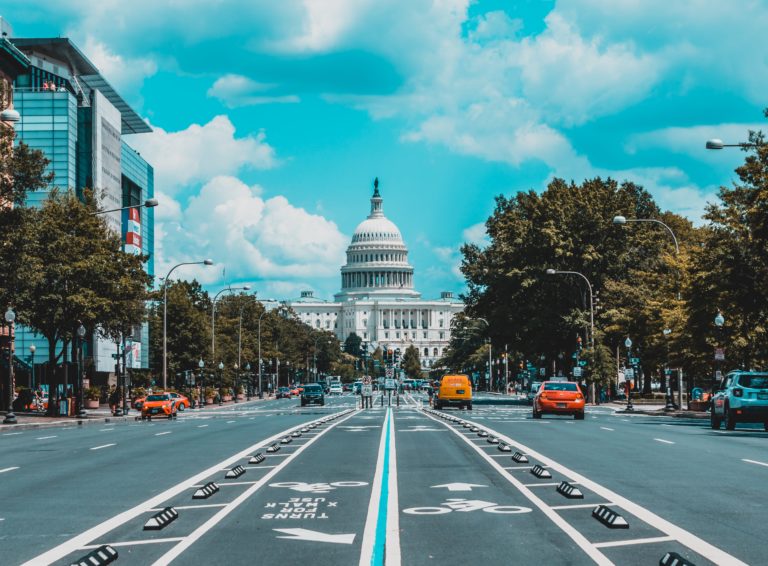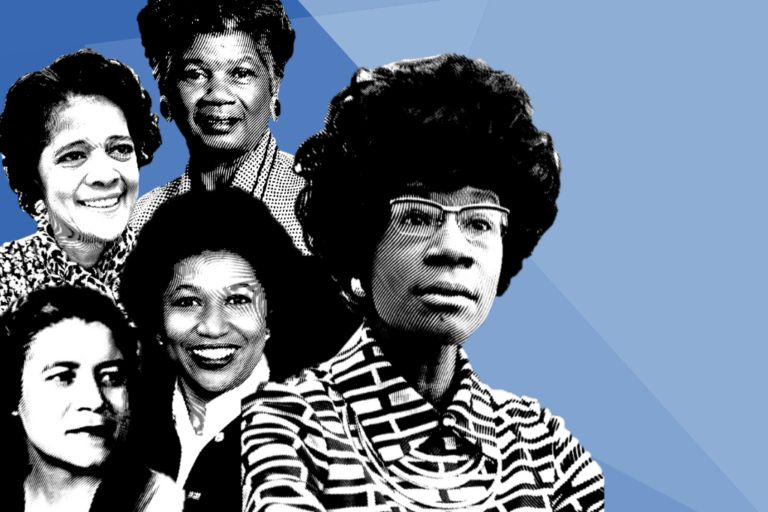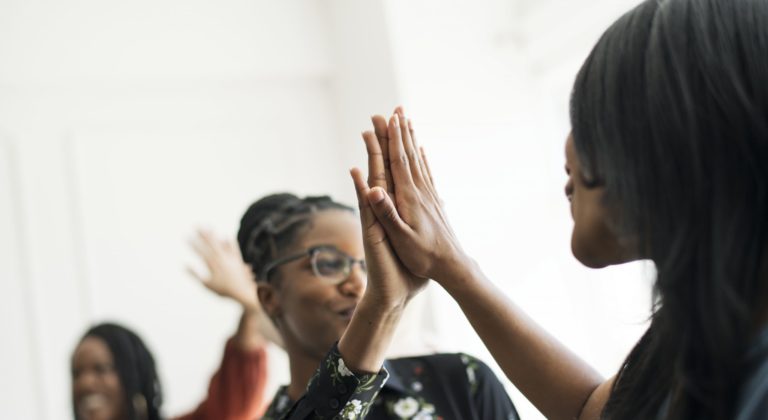A record number of Black women are running for Congress this year. At least 122…
Black Herstory: Four Black Suffragists You Should Know About

In 1920, the 19th Amendment was ratified, giving white women the right to vote. This was hailed as a monumental success, after more than a half century’s worth of activism. But the ratification of the 19th Amendment highlighted the complexities of women’s representation in the suffrage movement since all women actually did not receive the right to vote.
Prominent suffragist Lucy Stone eventually split from Susan B. Anthony and Elizabeth Cady Stanton’s efforts because Stone wanted to support Black women’s fight for representation. Many Black women spoke out about these complexities and advocated for equal representation in the suffrage movement. Below are four Black women who fought to secure the right to vote for all women.
Mary Ann Shadd Cary (1823 – 1893)
Mary Ann Shadd Cary was an American-Canadian abolitionist, publisher, and the first Black woman to attend law school in the U.S.
Cary was born “free” during the time of slavery in the United States in Delaware. When she was ten years old, Cary and her family moved to Pennsylvania, where she attended school and became a teacher. The Cary family actively helped freedom seekers during their passage through the Underground Railroad. After the Fugitive Slave Act passed in 1850, Cary, like other free Black people at the time, migrated to Canada.
After marrying her husband, Thomas Cary, Cary opened a school for Black and white students. While living in Canada, Cary extensively wrote about the importance of freedom. Cary later founded the anti-slavery newspaper, The Provincial Freeman, making her the first Black, female newspaper in North America. The newspaper’s slogan was, “Devoted to antislavery, temperance and general literature.”
Cary was heavily involved in the women’s suffrage movement. She joined several organizations working for the advancement of women, including the National Woman Suffrage Association. Cary strongly advocated for the ratification of the 14th and 15th Amendment, but was critical of the 15th Amendment given that it did not give women the right to vote. Cary testified alongside Susan B. Anthony and Elizabeth Cady Stanton at the Judiciary Committee of the House of Representatives.
Cary passed away in Washington, D.C., 1893.
Frances Ellen Watkins Harper (1825 – 1911)
Frances Ellen Watkins Harper was an abolitionist, suffragist, and poet, one of the first African-American women to be published in the United States.
Harper was born in Baltimore, Maryland and raised by her aunt and uncle after the death of her parents. Harper’s uncle was a vocal abolitionist who founded his own school, the Watkins Academy for Negro Youth, which Harper attended until she was thirteen. After attending her uncle’s school, Harper began working for a white family who owned a bookshop and fell in love with literature, later on becoming an author herself. Witnessing her uncle’s passion for the freedom of African-Americans in the United States, and her love of literature inspired Harper to begin her journey into activism and teaching.
After teaching in Ohio during the mid-1850s, Harper moved to Pennsylvania and devoted herself to the abolitionist cause. Working for the American Anti-Slavery Society as a traveling lecturer, Burroughs spoke alongside Frederick Douglass, William Lloyd Garrison, Susan B. Anthony, and Sojourner Truth.
Harper brought key issues faced by African-American women to the forefront through her lectures and writing. At the National Women’s Rights Convention in New York in 1866, Harper gave her famous, “We Are All Bound Up Together.” In this lecture, she asked attendees for the representation of Black women in the suffrage movement, explaining that they face a unique set of challenges due to their race and gender. Harper also heavily supported the Fifteenth Amendment alongside other abolitionists like Frederick Douglass and Lucy Stone.
Harper ultimately settled in Philadelphia and passed away in 1911.
Nannie Helen Burroughs (1879 – 1961)
Nannie Helen Burroughs was a Black educator, civil rights activist, feminist, and talented orator.
Burroughs was born in Virginia to formerly enslaved parents, and relocated to Washington D.C. upon her father’s passing. Burroughs was an excellent student, graduating with honors from M Street High School, now Paul Laurence Dunbar High School. Inspired by her love of education and her teachers, Burroughs sought to teach in the Washington D.C. Public School System, but was ultimately denied due to her skin color. With the help of the National Baptist Convention, Burroughs opened her own school, the National Training School for Women and Girls, now called the Nannie Helen Burroughs School, a school dedicated to the advancement of young Black women who otherwise didn’t have access to an adequate education.
Burroughs was able to open the school due to a collection of donations from African-American women and children through the National Baptist Convention. During Burrough’s time with the NBC, a group dedicated to the unification of Black Baptists, she was heavily involved with the women’s auxiliary of the organization championing for women’s rights and she even mentored future civil rights leader Dr. Martin Luther King, Jr.
In addition to her work with the NBC, Burroughs was deeply involved with the women’s suffrage movement. Burroughs wrote about Black and white women needing to work together to achieve the right to vote for all women, regardless of skin color. Burroughs theorized in her writing that protecting the African American woman’s right to vote would also protect them from the prejudice they faced in society.
Burroughs remained a fierce feminist and civil rights activist until her death in 1961.
Daisy Elizabeth Adams Lampkin (1883 – 1865)
Daisy Elizabeth Adams Lampkin was a suffragist and civil rights activist who is known for expanding the field secretary role in the NAACP.
Adams Lampkin was born in Reading, Pennsylvania. When she finished her schooling, she relocated to Pittsburgh, Pennsylvania and became involved in the social justice movement. In 1912, Lampkin began holding local suffragist meetings at her home. She also joined the New Negro Women’s Equal Franchise Federation, later renamed the Lucy Stone League, where she would organize tea parties and street-corner speeches in order to engage women in the suffrage movement.
During her work with the women’s suffrage movement, Lampkin also became a leader in the Black women’s club movement. Adams served as the National Board Chairwoman of the National Association of Colored Women (NACW). She developed notable friendships and partnerships with other Black women’s movement leaders such as Mary Church Terrell and Charlotte Hawkins Brown.
Lampkin passed away in 1965 after suffering from a stroke during a NAACP membership drive.






